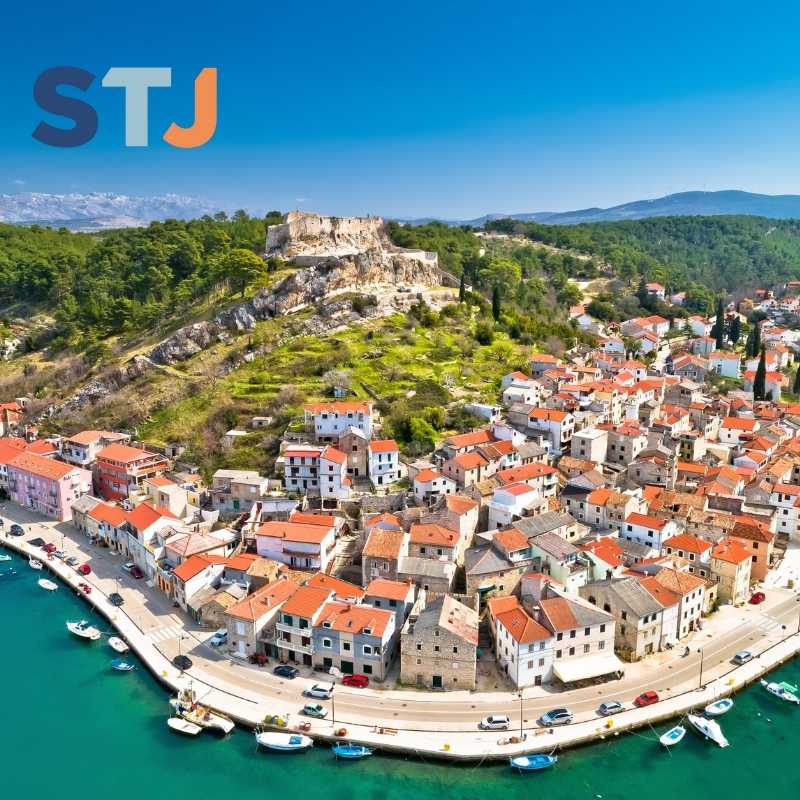By Anamarija Kolimbatovic.
Tourism is one of the most important industries in Croatia. It is the single most highest revenue source for individuals as well as companies and it is built and developed through our tourism strategy, mainly the Croatia full of life program.
Tourism is the number one industry in Croatia, and the region of Dalmatia is the most visited part of this country, especially during the summer months. From June to October, Croatian islands and coastal towns are beaming with life and people.

Introduction to the region of Dalmatia
Dalmatia has always been a place of contrasts—where rugged mountain cliffs meet the open Adriatic, where Roman palaces breathe beside modern cafés, and wherecenturies-old villages still carry the rhythm of lives lived close to nature. As someone who grew up along this coast, I’ve watched our summers swell with tourists and our towns stretch to accommodate a growing tide of interest. But now, Dalmatia is facing a pivotal moment: a need to redefine what tourism means, and how it can exist in harmony with the land and people who call it home.
A Shift Toward Sustainability
At the heart of Dalmatia’s new tourism strategy is a commitment to sustainability—not just as a buzzword, but as a guiding principle. The goal is to reduce environmental pressure while still welcoming the world. That means protecting fragile ecosystems, limiting over-tourism in hot spots like Dubrovnik and Split, and spreading tourism more evenly across the year and the region.
Over-tourism has been an issue for a while now, especially in Split. Over-crowded streets, people waiting in traffic jams in the bustling heat—and most importantly, a visible rise in waste, especially along the beaches, in the sea, and on the shoreline. The coast, once clear and wild, now often bears the mark of mass tourism: plastic bottles, packaging, and other debris left behind in places that used to feel untouched. It’s not just an aesthetic problem—it’s an environmental one, threatening the fragile ecosystems of the Adriatic and the natural beauty that draws people here in the first place.
Local authorities and tourism boards are prioritizing eco-conscious initiatives, including waste management improvements, promotion of low-impact activities like hiking, cycling, and sailing, and educational efforts around marine conservation. The aim is simple: to keep Dalmatia beautiful for the next hundred summers, not just the next ten.
Beyond the Adriatic Shore
For too long, Dalmatian tourism has been defined by its coastline. While the beaches and islands remain a cornerstone, there’s a renewed push to bring attention to inland Dalmatia—the Zagora region—with its vast karst landscapes, hidden rivers, and traditional stone villages.
Rural tourism is on the rise, offering travellers something more rooted: olive picking with locals, sleeping in restored village homes, learning how to bake under the peka. It’s not about luxury in the traditional sense, but rather about authentic, grounded experience.
This strategy isn’t just about spreading tourist numbers—it’s about revitalizing forgotten parts of Dalmatia and keeping small communities alive.
Preserving Culture Without Performing It
One of the challenges Dalmatia faces is how to celebrate culture without commodifying it. The region is rich in intangible heritage—klapa singing, fishing traditions, ancient dialects, festivals that still follow the lunar calendar. The tourism strategy recognizes that these traditions should not be staged performances for tourists, but shared stories that invite deeper understanding.
Local artisans, chefs, farmers, and guides are now central to the tourism economy. By foregrounding community-led experiences, the region is attempting to shift from a model of consumption to one of connection.
The Sea as Lifeline and Responsibility
Growing up by the sea, I was taught to respect it as both a gift and a force. Nautical tourism—one of Dalmatia’s strongest assets—is evolving, too. Sustainable sailing practices, cleaner marinas, and better regulation of yacht traffic are part of the broader effort to protect the Adriatic.
Marine protected areas are being monitored more closely, and there are increased campaigns to educate visitors on preserving underwater life, reducing plastic pollution, and respecting marine wildlife. The strategy makes it clear: the sea isn’t just scenery— it’s our lifeblood.
Smart Tourism, Digital Reach
In step with global trends, Dalmatia is investing in digital transformation. From booking systems and QR-coded heritage sites to targeted social media campaigns, the region is adapting to meet travellers where they are—online. But the messaging is changing: the focus is on depth over spectacle. More and more, tourists are being invited to engage with the soul of Dalmatia, not just skim the surface.
This article is part of the practical work carried out by the students of the Master’s in Travel Journalism.